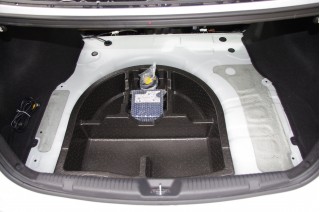Vehicle Spare Tires May Soon Be A Thing Of The Past
 Buying a car can be a stressful experience. One thing buyers could depend upon was that the new vehicle they were about to purchase included a spare tire. That now may not always be the case.
Buying a car can be a stressful experience. One thing buyers could depend upon was that the new vehicle they were about to purchase included a spare tire. That now may not always be the case.
To meet new government fuel efficiency standards some vehicle manufacturers are omitting heavy spare tires and equipping new vehicles with an emergency sealant and inflator kit or tires that if damaged can run reasonable distances without air.
In 2010, the Department of Transportation and Environmental Protection Agency established new corporate average fuel economy standards for vehicle model years 2012-to-2016. The new standards are set at a combined 29.7 mpg for the 2012 model year, increasing to 34.1 mpg by 2016.
Achieving these standards will require many changes to vehicles. One area of focus is to reduce the weight of vehicles without compromising occupant safety. A spare tire, related tools, and a jack can weigh more than forty pounds. That may seem like a small amount but every little bit helps, and unlike other weight saving changes, it doesn't add cost to the vehicle.
"Unfortunately many vehicle owners may be unaware that their vehicle has no spare tire until they experience a flat tire," says John Nielsen, AAA National Director of Auto Buying, and Consumer Information. "Consumers should review their owner's manual and emergency maintenance supplies they have in the vehicle and be informed about alternatives to a spare to prevent panic or a delay when encountering a flat tire."
The following tips are recommended to ensure you are informed and prepared:
- Inspect the car and consult your owner's manual. If the vehicle has a spare, be sure it is properly inflated and stowed. If you cannot locate a spare tire, ensure your vehicle has an alternate solution. Options include the run-flat tires that allow the car to be driven to a safe location or an emergency sealant and inflator kit.
- If you carry a sealant, it is recommended that you check the date and replace it every five years or after its use. Sealant can become less effective with age.
For a list of vehicles currently being sold without a spare tire, click here.
 Buying a car can be a stressful experience. One thing buyers could depend upon was that the new vehicle they were about to purchase included a spare tire. That now may not always be the case.
Buying a car can be a stressful experience. One thing buyers could depend upon was that the new vehicle they were about to purchase included a spare tire. That now may not always be the case.